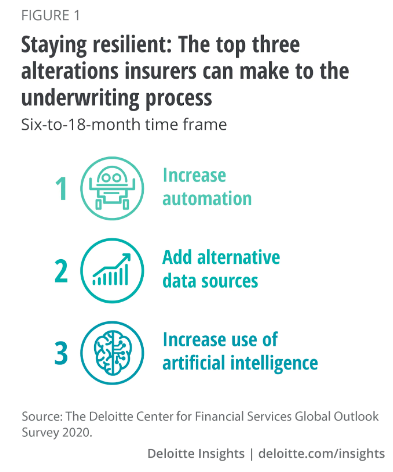
Underwriters perform essential tasks, But continuously combing through various guidelines and manuals to rate risk often slows them down.
It doesn’t have to be that way.
The best way to optimize your underwriters' performance is to offer them new technology that will cut out tedious tasks and streamline their processes. In this article, we’ll break down what technology you should consider and why it will benefit your underwriters.
Why It’s Time To Digitize Underwriting
Between the rise of insurtechs and a looming insurance industry talent crisis, traditional types of insurance companies are facing pressure to digitize. Underwriting especially has come to the foreground of the call to digitize the industry.
Underwriters are being challenged to move from evaluating underwriting decisions after the fact to actively monitoring portfolios. They’re also expected to adapt to the evolving nature of risk. These teams need to be able craft custom policies in order to keep up insurance consumers’ demand — but they need the right underwriting technology to do so.
Five Types of Technology to Add to Your Underwriting Tech Stack

Consider looking for technology that can improve processes in the following ways:
- Improving the quoting process
- Increasing the ability to handle large amounts of data
- Ease of doing daily tasks
- Ability to access internal knowledge
Here are examples of technology that can do that for your underwriting team.
Robotic Process Automation (RPA)
The introduction of automation technology has been a game changer for the insurance industry — especially RPA technology. It can help streamline the more tedious parts of underwriting for insurance in the following ways:
- Gathering and organizing data from a variety of different sources
- Extracting relevant data from unstructured sources, such as client emails
- Streamlining and automating the risk submission process
RPA technology works in tandem with your company’s underwriting guidelines to move the risk evaluation along, making it smoother and quicker. These tools help by removing monotonous tasks from the underwriting process. The risk of human error is lessened, leaving underwriters to write better policies.
Internet of Things (IoT)
IoT is able to mine massive amounts of data from a number of different sources, giving you a more comprehensive understanding of your customers' behavior. Consider car insurance. Insurers previously had to evaluate statistics like age, gender, mileage and car model to determine the premium they plan to offer.
But with IoT, underwriters can review even more driving record statistics. They could look into driving speed, number of full brakes per kilometer, and a driver's engagement with their cell phone. When they are armed with that information, underwriters can provide companies with a more accurate risk assessment.
Knowledge Management
Underwriters often manually read through multiple documents in order to pull out a piece of information for just one case. If those documents are scattered and unorganized, that makes an underwriter's job significantly more challenging.
An insurance knowledge management system will take that problem out of the equation. This would allow you to gather all insurance documents and keep them centralized in one place.
Prioritize selecting an AI-powered knowledge management tool that's built for the insurance industry. A solution like this will learn from user searches and become smarter every day, continually make your underwriters' jobs easier.
APIs
APIs help underwriters access more data by allowing different portals or digital tools to communicate with one another. That enables underwriters to perform real-time fact checking in volumes that had previously not been done before.
For example, someone underwriting a homeowner's policy may need to consider the location of the dwelling, the type of construction used on the home, and the property's value. Leveraging an API would enable an underwriter to funnel all that information into one centralized location.
Data Analytics
Leveraging predictive analytics allows insurers to look into the future by examining past behavior models. That means that insurers can best understand how someone is likely to respond to potential risks that may come their way.
With that technology, a life reinsurer can analyze the medical history and conditions of a patient that survived a serious disease. Using data analytics, the underwriter would be able to predict the risk of extending coverage to that person. The benefits of digital transformation for underwriters are limitless.






